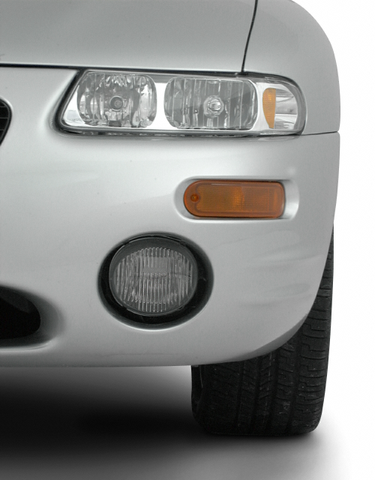
#2000 chrysler sebring lxi plus
Plus we’d pick the first-generation Chrysler Sebring convertible over the versions that followed. There’s a lot to be said for a comfortable cruiser as cheap wheels, and a convertible is a bonus.

These Sebring convertibles proved popular. White examples had monochromatic body-color trim that replaced much of the usual chrome accents, and could be ordered with white-painted hubcaps. Other touches included a white top boot and a set of silver wheel covers that unfortunately look like a set of generic replacements from a parts store. These came in Flame Red or Bright White, each with the interior trimmed in Frost White vinyl with dark-gray accents. We also came across a flyer for a “1997½ Spring Special” version of the base JX. These included new top-line Limited trim in 1998, and standard V-6 power across the board in 1999. Interiors were cloth, vinyl, or leather depending on the trim level.
#2000 chrysler sebring lxi manual
The convertible top-vinyl on JX, cloth on JXi each with a glass rear window-had manual latches at the windshield header, but moved up or down electrically. C/D further explained that this design made it easier to access the car’s rear seat and also eliminated the need for a structural “halo hoop” like the ones found on some contemporary convertibles including the Oldsmobile Cutlass Supreme and Volkswagen Cabrio.
#2000 chrysler sebring lxi driver
Moving inside, Consumer Guide ® reported, “Interiors are roomy, with impressive space for two adults in back seat.” Car and Driver talked up the front seatbelts that were incorporated into the bucket seats, a detail then only shared with some BMW and Mercedes-Benz offerings. Either way, buyers got a four-speed automatic transmission. Stepping up to the JXi brought a Mitsubishi-sourced 168-horse 2.5-liter ohc V-6. Base curb weight was 3340 pounds.Įntry-level JX models ran a 150-horsepower 2.4-liter four-cylinder. By comparison, the 1995 LeBaron convertible wheelbase measured 101, the Cirrus stretched to 108, and the Sebring coupe came in at 104. The 193-inch-long Sebring convertible rode a 106-inch wheelbase. The top-down profile was graceful, with a low cowl, swept-back windshield, and a gently rising beltline. The handsome front end fortunately recalled the then-new 1996 Chrysler Town & Country minivan’s face more than the fussy Sebring coupe’s. Styling was clean with soft curves and tasteful detailing.

Like Cirrus, the new ragtop followed Chrysler’s then-favored “cab-forward” design philosophy. In a September 1995 preview, Car and Driver stated the new Sebring was ”a dedicated convertible, sharing not one single body panel with any car in Chrysler’s current arsenal.” In contrast, the Chrysler-built Sebring convertible was based on the hardware from the brand’s well-received ’95 Cirrus sedan. While both cars were front-wheel drive, the Sebring coupe was based on the Mitsubishi Galant and built by the Chrysler/Mitsubishi Diamond-Star joint venture. While the Sebring Convertibles of this era were based mechanically on the popular sedan of the same name, the Sebring coupe was built my Mitsubishi and shared its architecture and drivetrains with that brand’s Galant sedan.


 0 kommentar(er)
0 kommentar(er)
